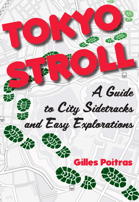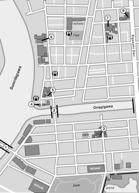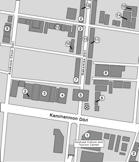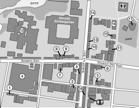











Tokyo Stroll Supplement: Arakawa ku

This page is for locations in the Arakawa ku area of Tokyo. Only a small part of this area is in my book Tokyo Stroll.
For information on Tokyo Stroll and this web supplement see Tokyo Stroll Supplement home page
For users of the Organic Maps, Maps.Me and Google Maps apps the items below have bookmarks you can import into those apps to make navigation easier.
Instructions and links are on the Viewing Locations in Organic Maps, Maps.Me, Google Maps, or Google Earth page.
Some entries on this page may include a note that says "Description to be added soon ." These entries are for items I felt should be listed even if the description is not ready to assist those who wish to plan a trip. When possible I included a link to an official web page, I suggest also doing web searchs for more information.
Arakawa ku (荒川区):
When Arakawa ku was formed in 1932 it was bordered on the north by the Arakawa River and given the name for that reason. In 1965, some time after the construction of the Arakawa Estuary, this stretch of the river was renamed the Sumidagawa. This locality has been continually inhabited for over 30,000 years so there is history for various locations in the ku. Due to the proximity of the river this area became significant for the transportation of goods and manufacturing.
Official pages for each of the ku of Tokyo will have sections of interest to visitors. These will likely be labeled as dealing with culture, tourism, or events.
Arakawa-ku official site: https://www.city.arakawa.tokyo.jp/
Arakawa Amusement Park / Arakawa Yūen (あらかわ遊園)
A large family focused amusement park that has been in business since 1922. They even have a slow roller coaster, advertised as the slowest in Japan, which is safe for young kids. The park closed in WWII and part of it was used for anti-aircraft gun emplacements. After the war the local government restored the park and reopened it in 1950. The park again closed in 2017 for renovations and reopened in 2022. There are still elements of the park that date from the Taishō and Shōwa Periods giving it a nostalgic feel to many visitors. The park includes a 40 meter high Ferris wheel, a merry go round, a train ride, and playground equipment. There are even ponds and a stream which is popular with kids in the summer. A children's pool is open during the summer months. One area is a zoo where kids can pet various animals and get a pony ride as well as having animals on display. The Fureai House, Contact House, has the Toden Mini Museum on the first floor with displays, and model trains, the second floor is used for workshops on weekends and holidays. When you get hungry there are restaurants here and there with simple dishes, including Café 193 which is inside a Toden 6000 class train car that has the nickname of Ichikyu-san. Along the river there is Alice Square, an 800 seat outdoor auditorium.
NEAREST TRAIN/SUBWAY STATION: Arakawashako-Mae Station (Toden Arakawa Line [Tokyo Sakura Tram])
WEB: https://www.city.arakawa.tokyo.jp/a038/yuuen/annai.html.
Arakawa Cultural Museum / Arakawa Furusato Bunkakan (荒川区立荒川ふるさと文化館)
A museum devoted to the history of Arakawa ku covering from prehistory to the present. Some areas of the museum are free, others require paid admission. The name of the museum is sometimes translated as the Arakawa Furusato Museum, Arakawa Furusato Cultural Center, or Arakawa Furusato Cultural Museum. Topics covered in the permanent exhibit include archaeology, history to recent times, folklore, locals traditional crafts, and the poet Bashō's Oku no Hosomichi which has a special connection with Arakawa ku as this is where he began his famous journey to the far north. The archaeological exhibits cover how locals lived including displays of artifacts from the Jōmon Period. Then they include the variety of people living and working in the area, how settlements were laid out, and administered. One section is devoted to life during the Tokugawa Period when this area became an important transit hub for overland and waterway traffic. After the Tokugawa Period the the exhibits show that the modern transition was from a mainly agricultural area to one with factories, followed after the Great Kantō Earthquake by a large influx of new dwellings turning it into an urban environment, the massive destruction of WWII, and revival after the war. Included are replicas of residences from the 1960s. There is also the Arakawa Traditional Crafts Gallery devoted to traditional crafts and each month demonstrations on some of the crafts are held. This part of the museum if free to enter.
NOTE: The museum shop is at the entrance and has various publications and free brochures.
NEAREST TRAIN/SUBWAY STATIONS: Minami-Senju Station (JR Joban Line), Minowabashi Station (Toden Arakawa Line [Tokyo Sakura Tram]).
WEB: https://www.city.arakawa.tokyo.jp/a016/shisetsuannai/koukyoushisetsu/bunka001.html
Arakawa Nature Park / Arakawa Shizen Kōen (荒川自然公園)
Opened in April 1974 and expanded in 1979 and 1996. At 61,100 square meters this is one of the largest parks in Arakawa ku. This park is actually built on top of some of the large tanks of the Mikawashima Water Reclamation Center which handles household, and industrial sewage as well as rain runoff for several parts of Tokyo. The park is in three parts, one of which is the Traffic Park where you can practice obeying traffic regulations on a bike, tricycle, or go-kart. There is an area with a large pond with carp and a swan. For activities there is a kids playground, a swimming pool, a baseball diamond, and tennis courts. Or if you prefer you can just stroll the trails, view the sculptures, enjoy the cherry trees and roses, or take a break on one of the many benches. There is even a zoo and an insect viewing area.
ACCESS: The main entrance is near Arakawa Nichōme Station, there is another north-west of the park
NEAREST TRAIN/SUBWAY STATIONS: Arakawa Nichōme Station (Toden Arakawa Line) is closest, then Arakawa Nanachōme Station (Toden Arakawa Line), Machiya Station (Keisei Electric Railway Keisei Main Line and Tokyo Metro Chiyoda Line) and Machiya-ekimae Station (Toden Arakawa Line)
WEB: http://arakawasizen-koen.com
Ariya (蟻や): Tokyo Stroll, Yanesen Chapter, page 448
NEAREST TRAIN/SUBWAY STATION Sendagi Station (Tokyo Metro Chiyoda Line), Nippori Station (JR East Joban Line (Rapid), JR East Keihin–Tōhoku Line, JR East Yamanote Line, Keisei Electric Railway Keisei Main Line, Toei Subway Nippori-Toneri Liner)
Enmeiin (延命院): Tokyo Stroll, Yanesen Chapter, page 445
NEAREST TRAIN/SUBWAY STATION Nippori Station (JR East Joban Line (Rapid), JR East Keihin–Tōhoku Line, JR East Yamanote Line, Keisei Electric Railway Keisei Main Line, Toei Subway Nippori-Toneri Liner)
Enmeiji (延命寺)
Getting to this Jōdo sect temple can be confusing as it is surrounded by train tracks on the north, west, south, and a busy roadway on the east. Fortunately the entrance is close to the south exit of Minami-Senju Station on the east side next to the elevated road. Like Kozukawara Ekōin this temple is in the vicinity of the Kozukappara Execution Grounds, one of Edo's three major execution grounds. The most striking item on the grounds of this temple is a very large seated stone Jizō. This statue is nicknamed Kubikiri Jizō (Chop Head Jizō or Beheading Jizō). The statue was placed here to pacify the spirits of the executed.
NEAREST TRAIN/SUBWAY STATION: Minami-Senju Station (Hibiya, Tsukuba Express or JR Jōban Line)
Fuji Viewing Slope / Fujimizaka (富士見坂): Tokyo Stroll, Yanesen Chapter, page 446
NEAREST TRAIN/SUBWAY STATION Nishi-Nippori Station (JR East Keihin–Tōhoku Line, JR East Yamanote Line, Tokyo Metro Chiyoda Line, Toei Subway Nippori-Toneri Liner)
Gotō no Ame (後藤の飴): Tokyo Stroll, Yanesen Chapter, page 448
NEAREST TRAIN/SUBWAY STATION Sendagi Station (Tokyo Metro Chiyoda Line), Nippori Station (JR East Joban Line (Rapid), JR East Keihin–Tōhoku Line, JR East Yamanote Line, Keisei Electric Railway Keisei Main Line, Toei Subway Nippori-Toneri Liner)
Ishihama Shrine / Ishihama Jinja (石浜神社)
This shrine is said to date from 724, the first year of the Jinki Era, and was constructed under Emperor Shōmu's orders making this the oldest shrine in Arakawa ku. Minamoto no Yoritomo, founder of the Kamakura Shōgunate prayed here after the defeat of the Fujiwara clan in 1189 and donated a building to the shrine. The seventh Kamakura Shōgun, Prince Koreyasu gave imperials gifts to the shrine and had prayers offered for victory against the Mongol invaders. There are two torii that date from 1749 and 1779.
The shrine proper is in the Shinmei-style and is registered as a Tangible Cultural Property. An arsonist burned down the main building in 1934, the hall was then rebuilt in 1937. All of the buildings were destroyed in the bombings of WWII. In 1988 the shrine was moved to the present location as part of redevelopment of this part of Tokyo.
The kami enshrined here are Amaterasu Ōmikami and Toyouke no Ōmikami. There are various sub-shrines for other kami on the grounds such as Edo Jinja for Susanoo-no-Mikoto, Kitano Jinja for Sugawara no Michizane, Myōgi Hachiman for Yamato Takeru and Emperor Ojin, Araka Jinja for Hikosashiri-no-mikoto, the White Fox Shrine, Masaki Inari Jinja for Toyoukehime-no-kami, Oide Inari Jinja also for Toyoukehime. In 1977 Jurōjin was enshrined at Ishihama Jinja as part of the revival of the Asakusa Shichifukujin Meguri route. On the grounds there is a Shintō cemetery, Ishihama Cemetery, which was opened in 2000. Shintō cemeteries are very rare few shrines have them. The grounds also contain a fujizuka mound, three kōshin towers next tot he fujizuka, as well as monuments with inscriptions from the Tale of Ise and poems by Kameda Bōsai The shrine is next to the Sumidagawa, nearby, to the south, was the location of Ishihama castle bult next to the ferry for the river. The Raku Ishihama Teahouse is on the grounds near the parking lot south of the torii where you can get snacks and beverages. The teahouse is closed on Wednesdays.
PILGRIMAGES: This shrine is on the Asakusa Shichifukujin Meguri route for Jurōjin.
ACCESS: The entrance is from the south next to a parking lot.
NEAREST TRAIN/SUBWAY STATIONS: Minami-Senju Station (Hibiya Line, Tsukuba Express, Jōban Line (Rapid)
WEB: https://www.ishihamajinja.jp
Jōkanji (浄閑寺): Tokyo Stroll, Yoshiwara and Sanya Chapter, page 472
NEAREST TRAIN/SUBWAY STATIONS: Minowa Station (Tokyo Metro Hibiya Line), Minowabashi Station (Toden Arakawa Line)
WEB: http://www.jyokanji.com
Jōkōji (浄光寺): Tokyo Stroll, Yanesen Chapter, page 446
NEAREST TRAIN/SUBWAY STATION Nishi-Nippori Station (JR East Keihin–Tōhoku Line, JR East Yamanote Line, Tokyo Metro Chiyoda Line, Toei Subway Nippori-Toneri Liner)
Joyful Minowa Shopping Arcade / Joyful Minowa Shōten Machi (ジョイフル三の輪商店街)
A very long, one of the longest in Tokyo, old fashioned covered shopping street known for it's Shōwa Period vibe. There is a side entrance near Minowabashi Station, shortly you need to turn to the right to walk the full length which will put you near Arakawa-Itchūmae Station. The street was formerly called the Minowa Ginza Shōtengai, the name was changed in 1978. There are all sorts of shops a neighborhood would need, including plenty of places to eat. The stock of the stores emphases practicality over fancy or trendy, this is not a tourist area. The 11th of every month is Benzaiten Day and a street wide sale is held. Lunchtime is said to be a good time to visit as the place gets busy and the food is good and cheap. Older shopping streets like this one often have vacant shops that have closed for good as the owners often live on the property, have retired, and have no one to take over the business. Joyful Minowa Shopping Street is actually not in Minowa but in Minami-Senju, however it is close to Minowa which is a few blocks to the south.
NOTE: Some scenes in the acclaimed 2018 movie Shoplifters were filmed here.
NEAREST TRAIN/SUBWAY STATIONS: Minowabashi Station and Arakawa-Itchūmae Station Station (both on the Toden Arakawa Line aka Tokyo Sakura Tram), Minowa Station (Hibiya Line).
WEB: http://www.joyfulminowa.com
Kozukawara Ekōin (小塚原回向院)
This Jōdo sect temple is also known as just Ekōin (回向院). The general area it is located in was the location of the Kozukappara Execution Grounds, one of Edo's three major execution grounds. Yoshida Shōin was buried at this temple after his execution, later his body was moved to what is now Shōin Shrine in Setagaya ku. There is also a memorial on the grounds to Takahashi Oden, in 1879 she was the past person to be executed by beheading in Japan.
NEAREST TRAIN/SUBWAY STATION: Minami-Senju Station (Hibiya, Tsukuba Express or JR Jōban Line)
Kyōōji (経王寺): Tokyo Stroll, Yanesen Chapter, page 445
NEAREST TRAIN/SUBWAY STATION Nippori Station (JR East Joban Line (Rapid), JR East Keihin–Tōhoku Line, JR East Yamanote Line, Keisei Electric Railway Keisei Main Line, Toei Subway Nippori-Toneri Liner)
Midoriya (翠屋): Tokyo Stroll, Yanesen Chapter, page 448
NEAREST TRAIN/SUBWAY STATION Sendagi Station (Tokyo Metro Chiyoda Line), Nippori Station (JR East Joban Line (Rapid), JR East Keihin–Tōhoku Line, JR East Yamanote Line, Keisei Electric Railway Keisei Main Line, Toei Subway Nippori-Toneri Liner)
Description to be added soon
NEAREST TRAIN/SUBWAY STATIONS: Arakawa Nichōme Station (Toden Arakawa Line) is closest, then Arakawa Nanachōme Station (Toden Arakawa Line), Machiya Station (Keisei Electric Railway Keisei Main Line and Tokyo Metro Chiyoda Line) and Machiya-ekimae Station (Toden Arakawa Line)
PDF: https://www.gesui.metro.tokyo.lg.jp/documents/d/gesui/02_mikawashima_r7_en-pdf
Minowabashi Station / Minowabashi-teiryūjō (三ノ輪橋停留場)
A terminus of the Toden Arakawa Line, nicknamed the Tokyo Sakura Tram, the other end of the line is Waseda Station in Shinjuku. From the nearby main street you will see an iron gate spanning the walkway covered in roses. There are two platforms, one for arrivals the other for departures. The station's departure platform has old metal advertisements from the Shōwa Period adding a nostalgic note. Near the station are various planters along the tracks with many different varieties of roses. The Toden Arakawa Line was founded in 1913 and is the last remaining streetcar line in the 23 ku area of Tokyo, there is one more in the Tama area. Railfans will be pleased in that several types of cars are run on this line. The Toden Arakawa Line goes close to many interesting locations covered in this supplement such as: Arakawa Amusement Park, Arakawa Natural Park, Asukayama Park, Otonashi Water Park, Zōshigaya Cemetery, and Zōshigaya Kishimojindō. Riding this line is rather pleasant as it goes through many different neighborhoods and is mainly used by residents so you see a variety of people.
NEAREST TRAIN/SUBWAY STATION: Minowa Station (Tokyo Metro Hibiya Line)
Namidabashi (泪橋)
The name translates as the Bridge of Tears, prisoners were taken across the bridge at this location on the way to be executed making this one of the last places family and friends could see them. The river over which it spanned has been culverted so the location of the bridge is now an intersection. There is another, less famous, Namidabashi in Shinagawa ku which was near the execution ground in that area.
NOTE: In the famous manga Ashita no Joe, and the anime based on it, there is a boxing gym in this location.
NEAREST TRAIN/SUBWAY STATION: Minami-Senju Station (Hibiya, Tsukuba Express or JR Jōban Line)
Nippori Fabric Town / Nippori Sen-i Gai (日暮里繊維街)
This commercial area began in the Taishō Period as a place for clothing specialty shops, originally selling surplus and defective goods. During the war years many shops closed as the government increasingly pushed for an emphasis for items that supported the military. After WWII shops began selling military surplus goods, used clothing from the occupying forces, eventually used clothing from the US, and various odds and ends. If you love doing stuff with fabrics, know someone who does, or just like sightseeing in unusual shopping districts this is a place for you. The shops are increasingly popular with tourists looking for items that are hard to get at home, so popular that they they make up a significant percentage of customers. With some 90 shops on one street and side streets there is plenty to check out. The shops, retail and wholesale, range from the very large Tomato, which has six branches, to extremely small there is plenty to see. The smaller shops are often focused on a single type of good. Examples range from buttons, tassels, a specific type of fabric, thread, sewing patterns, leather, sailcloth, second hand clothing (including kimono), consignment, beads, cosplay, sewing machines, even a stage curtain maker. If you get hungry, or just want to get off your feet there are restaurants and old fashioned coffee shops.
NOTE: The official website has an English map and store list in PDF format.
ACCESS: From Nippori Station head east, away from Yanaka.
NEAREST TRAIN/SUBWAY STATION: Nippori Station (Joban Line [Rapid], Keihin-Tohoku Line, Yamanote Line, Keisei Electric Railway, Keisei Main Line, Nippori-Toneri Liner).
WEB: https://www.nippori-senigai.com/en/
Nippori Station / Nippori Eki (日暮里駅)
Nippori Station has some interesting design elements which can be easily overlooked if you don't keep an eye out for them. These are all related to this being the closest station to Yanaka, which is also known as Neko Machi, Cat Town. The station has a cat mascot named Nyappori which was designed by a staff member in 2011. You may spot Nyappori on some of the stations signage. Other locations inside the station include Nyappori's face on a floor tile, another near some triangular designs, and a full image on a clear tile near the north ticket gate. Outside the station you can see that the kanji in the station name at the west exit near Goten Zaka includes design details such as at the top of the 暮 what looks like cat ears, and the 駅 looking like a cat paw print on the left radical and a tail ending on the right one
Seiunji [Shoun-ji Temple] (青雲寺): Tokyo Stroll, Yanesen Chapter, page 447
NEAREST TRAIN/SUBWAY STATION Nishi-Nippori Station (JR East Keihin–Tōhoku Line, JR East Yamanote Line, Tokyo Metro Chiyoda Line, Toei Subway Nippori-Toneri Liner)
Shimogoinden Bashi (下御隠殿橋): Tokyo Stroll, Yanesen Chapter, page 445
NEAREST TRAIN/SUBWAY STATION Nippori Station (JR East Joban Line (Rapid), JR East Keihin–Tōhoku Line, JR East Yamanote Line, Keisei Electric Railway Keisei Main Line, Toei Subway Nippori-Toneri Liner)
Shushōin (修性院): Tokyo Stroll, Yanesen Chapter, page 446
NEAREST TRAIN/SUBWAY STATION Nishi-Nippori Station (JR East Keihin–Tōhoku Line, JR East Yamanote Line, Tokyo Metro Chiyoda Line, Toei Subway Nippori-Toneri Liner)
Street of Bones / Kotsu-dōri (骨通り)
Aka Bone Street, you won't find this listed on modern, or probably even older maps, as it was an Edo Period and Meiji Period nickname for a stretch of Sanya dōri from near Namidabashi going towards Susanoo Jinja. Heads of those executed at the adjacent Kozukappara Execution Ground were displayed along part of this route. The number executed during the Edo Period and early Meiji Period is not known but estimated to being around or over 200 thousand. The bodies of the executed were also buried nearby in shallow mass graves to often be dug up and eaten by feral dogs, who left the bones scattered about. Construction projects in this area usually turn up human bones, not skeletons but scattered individual bones, sometimes in large quantities.
NEAREST TRAIN/SUBWAY STATION: Minami-Senju Station (Hibiya, Tsukuba Express or JR Jōban Line)
Susanoo Shrine / Susanoo Jinja (素盞雄神社)
Founded in 795 by Kokuchin, one of the disciples of En no Gyōja, who worshiped here at the location of a strange rock when two kami appeared to him. He then built two shrines for the kami on the location. The since the shrine was destroyed in the firebombings of WWII present buildings date from after the war, the shine was rebuilt in 1957, and the main hall in 1981. Locally this shrine is often referred to as Ōtennō Sama or Tennō-sama. On the grounds there is a stone, a designated Cultural Property by Arakawa City, with a poem by Bashō that mentions Senju, this part of Tokyo, from which he departed on his trip to the deep north that he documented in his Oku no Hosomichi. One can see a fujizuka which dates from 1864, however it is only accessible during Oyama Biraki, "opening of the mountain," on July 1. This fujizuka incorporates the rock mentioned in the founding legends. The grounds also contains a ginkō tree that is about 600 years old. A legend says a mother could not produce enough milk for her child so she drank some water from the tree and was able to do so. Today mothers will place ema on the tree with prayers for the well being of their children. You will also see unique komainu, Jizō statues and stone pagodas, including a kōshin pagoda that dates from 1678, on the grounds.
The enshrined kami were known as Gozu-Tennō and Asuka Kongen until 1868 when their names were officially changed to Susanoo Ōkami and Asuka Ōkami during the reforms of the Meiji Period.
ACCESS: Main entrance to the south, side entrances on the east, and south-west.
MAJOR FESTIVALS:
Tennō Festival June 3rd
Asuka Festival September 15th
From late February to early April the shrine has a very large display of hina dolls.
NEAREST TRAIN/SUBWAY STATIONS: Minami-Senju Station (Hibiya, JR Jōban or Tsukuba Express Lines) and Senjuōhashi Station (Keisei Main Line)
WEB: https://susanoo.or.jp
Suwa Shrine / Suwa Jinja (諏方神社): Tokyo Stroll, Yanesen Chapter, page 446
NEAREST TRAIN/SUBWAY STATION Nishi-Nippori Station (JR East Keihin–Tōhoku Line, JR East Yamanote Line, Tokyo Metro Chiyoda Line, Toei Subway Nippori-Toneri Liner)
Yanaka Ginza (谷中ぎんざ): Tokyo Stroll, Yanesen Chapter, page 449
NEAREST TRAIN/SUBWAY STATION Sendagi Station (Tokyo Metro Chiyoda Line), Nippori Station (JR East Joban Line (Rapid), JR East Keihin–Tōhoku Line, JR East Yamanote Line, Keisei Electric Railway Keisei Main Line, Toei Subway Nippori-Toneri Liner)
WEB: https://www.yanakaginza.com
Yōfukuji (養福寺): Tokyo Stroll, Yanesen Chapter, page 446
NEAREST TRAIN/SUBWAY STATION Nippori Station (JR East Joban Line (Rapid), JR East Keihin–Tōhoku Line, JR East Yamanote Line, Keisei Electric Railway Keisei Main Line, Toei Subway Nippori-Toneri Liner)
Yūyake Dandan (夕やけだんだん): Tokyo Stroll, Yanesen Chapter, page 447
NEAREST TRAIN/SUBWAY STATION Sendagi Station (Tokyo Metro Chiyoda Line), Nippori Station (JR East Joban Line (Rapid), JR East Keihin–Tōhoku Line, JR East Yamanote Line, Keisei Electric Railway Keisei Main Line, Toei Subway Nippori-Toneri Liner)
Back to the Tokyo Stroll Supplement home page - Privacy Notice - Back to Gilles' home page
Created January 30, 2024 | Content last updated September 13, 2025